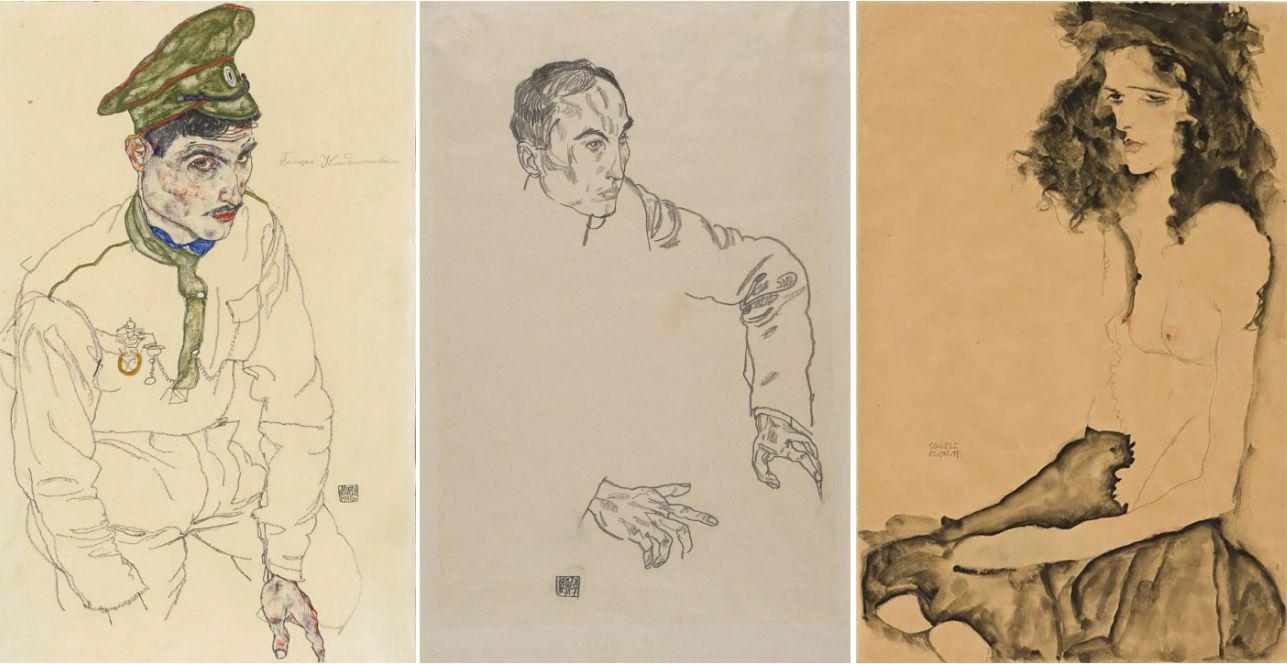
New York authorities have seized works by Austrian expressionist Egon Schiele from three different American museums. All three portraits were stolen from a Jewish collector and cabaret artist during the Holocaust; Fritz Grünbaum died in Dachau in 1941.

Police this week took the paintings from the Art Institute of Chicago, the Carnegie in Pittsburgh and the Allen Memorial Museum at Oberlin College in Ohio. A seizure warrant was signed by the Manhattan District Attorney based on reasonable suspicion that all the works were stolen property.
All three portraits are – in addition to many other pictures from a private collection Fritz Grünbaum – at the center of a legal battle involving Grünbaum’s heirs. They are convinced that the cabaret artist, who started collecting fine art in the 20s of the last century, gave up his collection under duress.
According to the Manhattan prosecutor’s interpretation, the case falls under US jurisdiction because all the artworks were bought and resold at some point by New York art dealers.
The upright posture that cost him his lifeGrünbaum was born in Moravia; his father was an art dealer. Fritz studied law, but in 1906 he started performing in a Viennese cabaret, which charted his new life path. At the time of Hitler’s rise, he was a considerable star both in Vienna and in Berlin, and in his performances he regularly shaved fools from Nazism. He once remarked on a darkened stage: “I can’t see anything, not even the smallest thing; I must have stepped into National Socialist culture.”
Fritz Grünbaum was thus arrested in 1938 and later interned in the Dachau concentration camp. He performed for his campmates for the last time on New Year’s Eve in 1940, when he was already very ill. He died on January 14, 1941.
The works seized in the US are: watercolor on paper Russian prisoner of war (estimated at $1.25 million), pencil drawing Portrait of a man (worth a million dollars) and a watercolor A girl with black hair (worth a million and a half dollars). Technically, the paintings are actually still in museums; they will be transferred to the prosecutor’s office later, the AP news agency reported.
None of the museums voluntarily gave up the paintingThe management of the Art Institute of Chicago, from where they were seized A Russian prisoner of warsaid in a press release: “We are convinced of the legality of our purchases and believe that we are the rightful owners of the artwork. This is the subject of a private lawsuit, where the case is being properly handled, and we are defending our position.”
The Carnegie Museum emphasized that they are committed to action “in accordance with ethical, legal and professional requirements and norms” and announced that they will cooperate with the authorities. Oberlin College also highlighted their cooperation, while at the same time they firmly believe that “we legally purchased Schiele’s Girl with Black Hair in 1958 and it is legally our property. Oberlin is not the subject of a criminal investigation by the prosecutor’s office.”
Before the prosecutor’s office issued the warrant for seizure, the Grünbaum family had already addressed a request to all three mentioned institutions for the return of the works, which they believe were stolen.
“The signature before the gun barrel is not valid”After a legal battle, Grünbaum’s relatives got back two of Schiele’s works in 2018. Grünbaum’s sister-in-law Mathilde Lukacs only sold those pieces after Fritz’s death, so the opposing side argued that they were the legal property of the art dealer Richard Nagy. The judge ruled in favor of the plaintiffs because there was no evidence that Grünbaum ever voluntarily transferred his ownership to his sister-in-law. “A signature before the barrel of a gun cannot mean a valid transfer of ownership,” the judge wrote at the time.
Source: Rtvslo